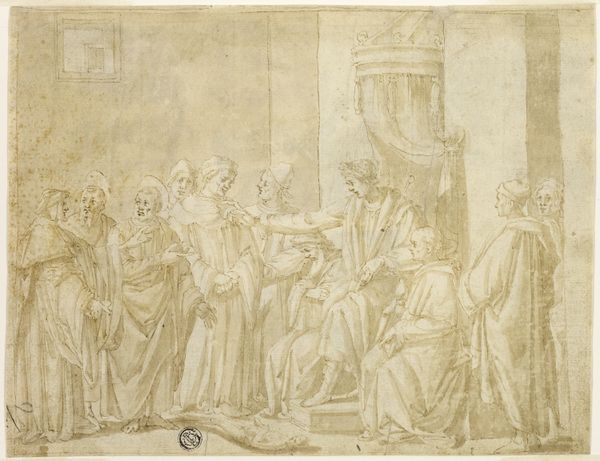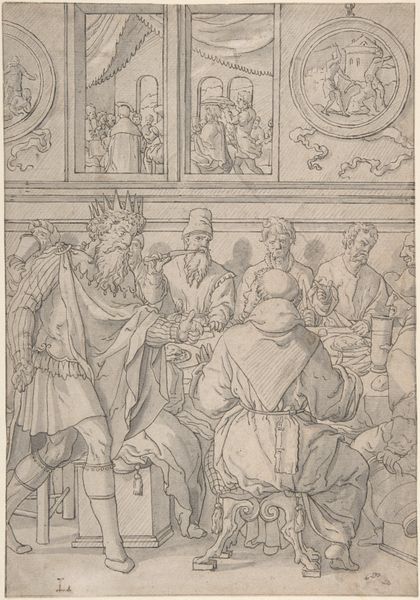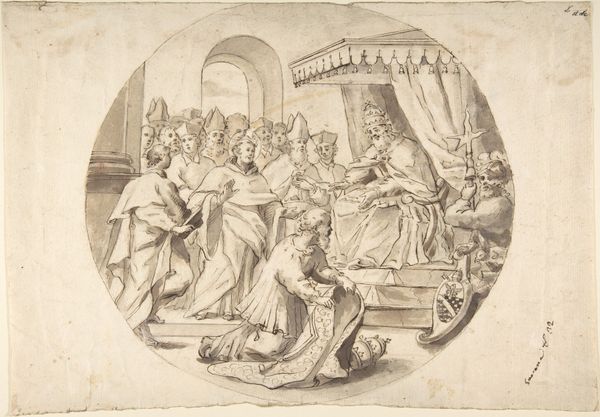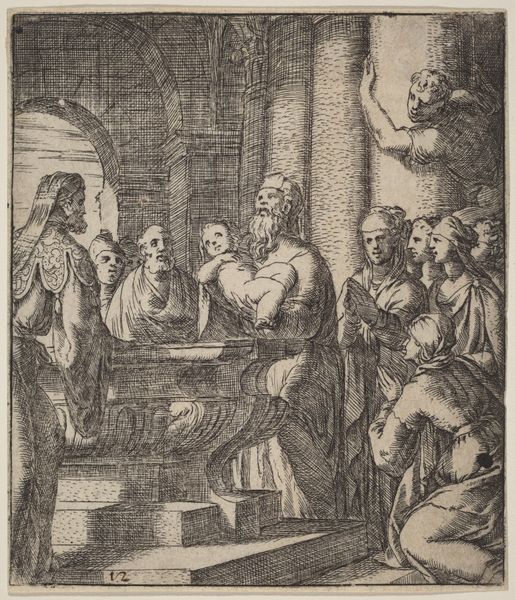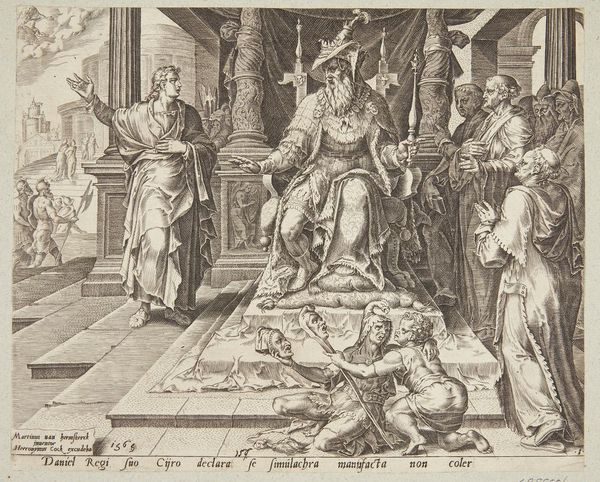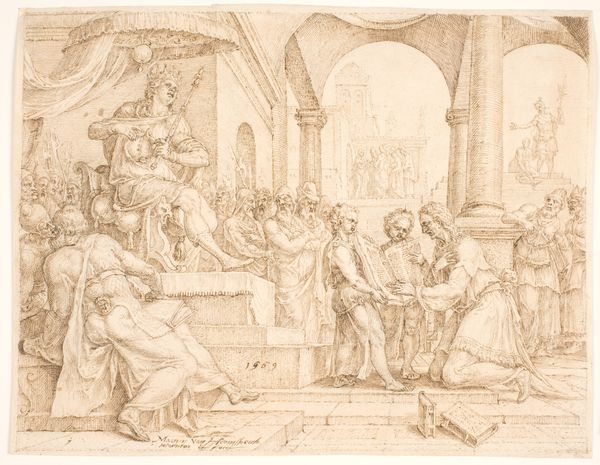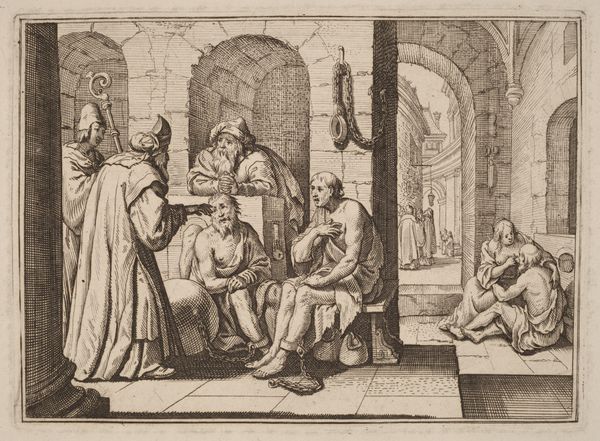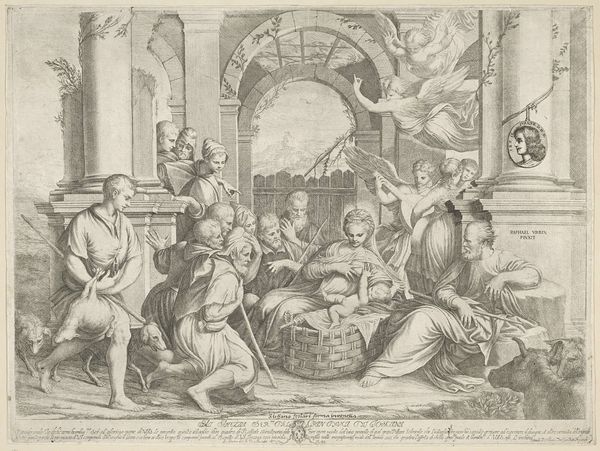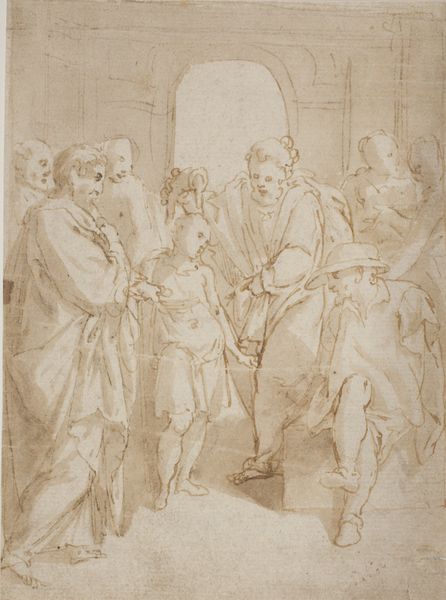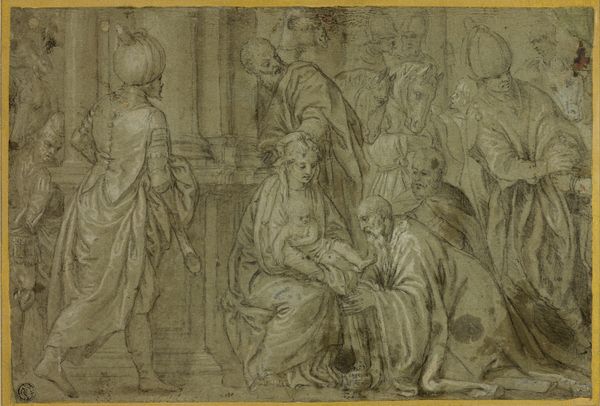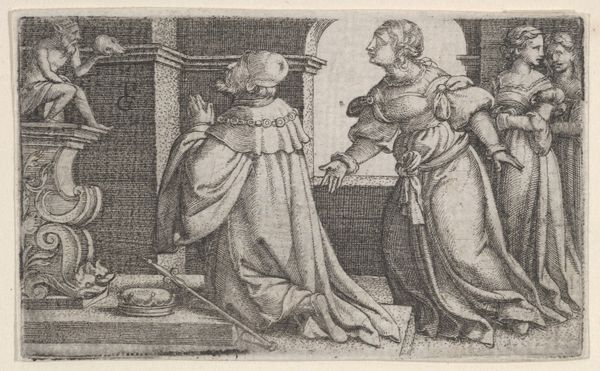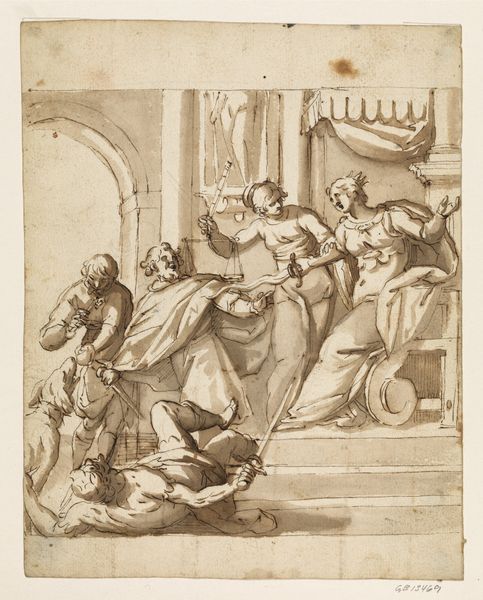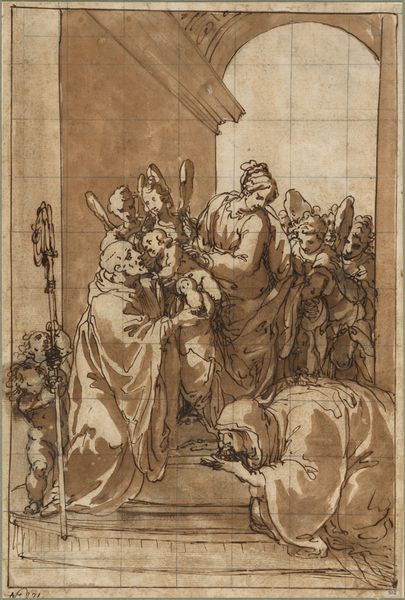
St Mark enthroned surrounded by four doges and a man with a doge’s cap in his hands 1556 - 1629
0:00
0:00
drawing, ink, charcoal
#
drawing
#
venetian-painting
#
charcoal drawing
#
figuration
#
11_renaissance
#
ink
#
charcoal
#
history-painting
#
charcoal
Dimensions: 198 mm (height) x 264 mm (width) (bladmaal)
Curator: Antonio Aliense's drawing, made with charcoal and ink, invites us to consider "St Mark Enthroned Surrounded by Four Doges and a Man with a Doge’s Cap in his Hands." It dates from 1556 to 1629. Editor: Well, my first thought is: what a power dynamic! I mean, St. Mark is just looming there, on what looks like a weary, maybe slightly irritated lion. You can almost feel the weight of history. Curator: Absolutely. It encapsulates Venetian power, doesn't it? St. Mark, their patron saint, elevated, literally, above the Doges, the elected leaders of Venice. It reinforces a kind of divine mandate, a connection to the sacred legitimizing their rule. Editor: Right, like, "We're not just powerful, we're *divinely* powerful." But is it just me, or is there a tension in the composition? Those Doges seem a bit… subservient? The guy practically offering his hat is laying it on pretty thick. Curator: I see that tension. It's in the carefully rendered faces, the body language. Are they showing fealty or perhaps, in their subtle expressions, hinting at a more complex relationship? Venetian politics was known for its intricate power plays, after all. Even then, the powerful ones wanted to be next to religion so they looked better. Editor: So this isn’t just a straightforward celebration, then? It’s an assertion *with* an undercurrent of negotiation? I’m really intrigued by the material; it's just a drawing, charcoal and ink on paper— a surprisingly understated medium for such a grand subject. Does the choice to create something that doesn’t scream "importance" challenge the importance of that type of art itself? Curator: I think you’re onto something. The apparent modesty of the materials maybe directs the audience towards the message, rather than getting caught up in grand gestures. Venetian painting, of course, was traditionally colorful but the simple charcoal, the unadorned nature, pushes it into something new! It’s a very different assertion of authority, done for people in a completely different way. Editor: Makes you wonder what was truly going on behind the scenes back then in Italy, not that much has changed it seems! This makes you think that everything in an artwork has meaning, in material or location... Curator: Indeed! It all combines to create this interesting message!
Comments
No comments
Be the first to comment and join the conversation on the ultimate creative platform.
